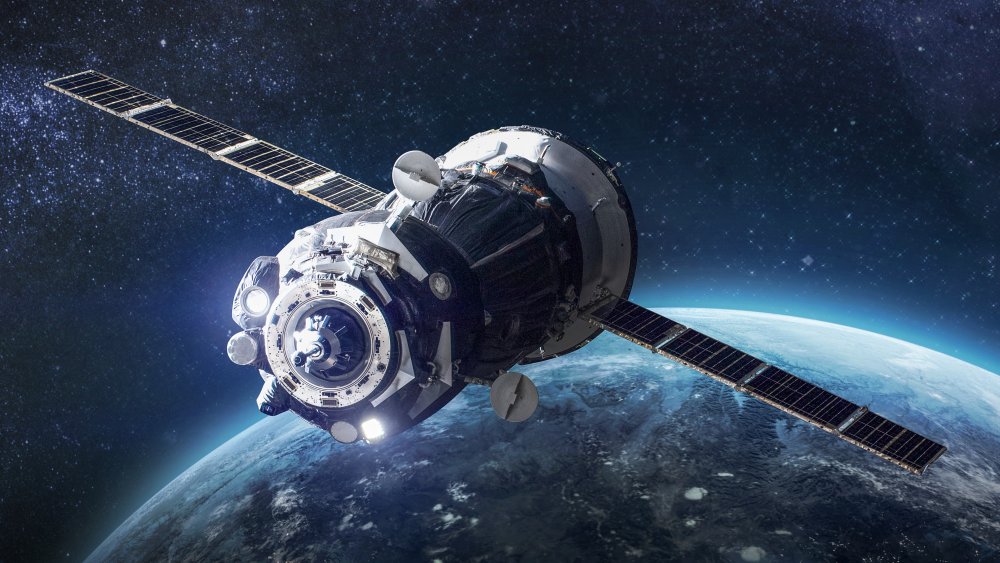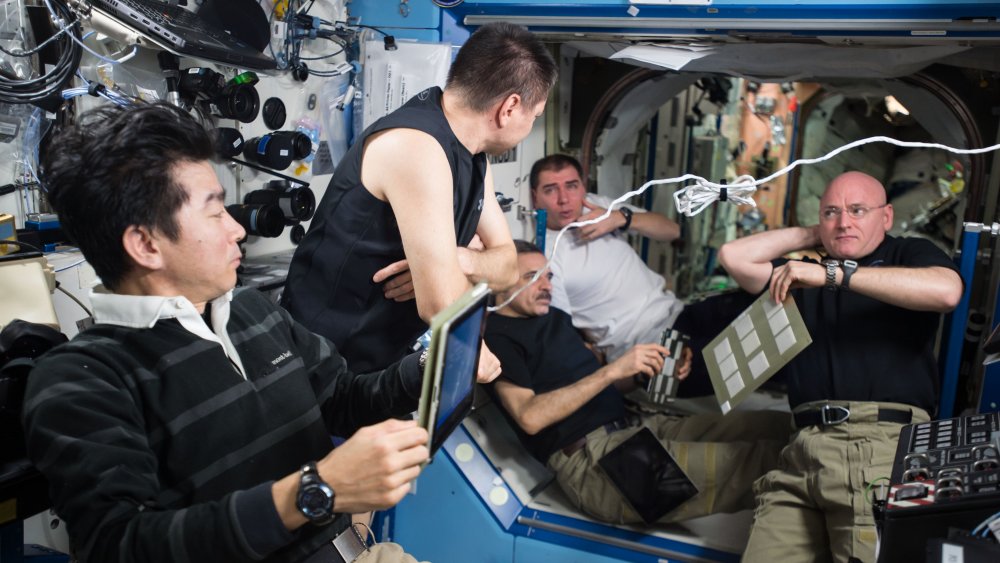Here's How Astronauts Weigh Themselves In Space
An important word in "sci-fi" is "fiction." It's a makey-up. Lucky us that, from time to time, a character or a plot line becomes a teachable moment, sort of — for instance, every time Captain Kirk's chief engineer Scotty exclaims "I cannot change the laws of physics!" Physics is physics, wherever you go — including outer space. No doubt some aspects of life are simpler when you're in space — no worrying about what to wear to work. Your commute is non-existent. Anything that happens in a bathroom on Earth is a little more problematic in space, but they've got that figured out, too.
For instance, how many of us keep a scale in the bathroom? Keep ourselves honest, or keep ourselves depressed, depending on the results. (Mr. Rogers weighed himself every day and every day he got the same result: 143 pounds.) That scale, no matter what iteration it might be — mechanical, digital — utilizes the law of gravity, as explained by The Happy Scientist, to give you your results. Space travel these days means weightlessness — only micro-gravity in space; space is still the place where no one can hear you scream if you've put on a few pounds on the International Space Station.
Everything's more complicated in space
Body measurements are an important part of any space mission. What's the impact of weightlessness on a human body? And how would we know?
Strictly speaking, then, astronauts can't weigh themselves during their missions. There are other measurements they utilize instead. One of the measurements taken is an astronaut's mass, which in turn will tell what that person's weight would be on Earth. They utilize a contraption called a "Space Linear Acceleration Mass Measurement Device (SLAMMD)," as Mental Floss tells us. The NASA astronaut climbs aboard the sort of pogo-stick-like mechanism, which then moves them about a meter as they ride. The force required to move them reveals body mass, from which can be calculated body weight. Air and Space Magazine says that the device is accurate within .5 pounds.
There are disadvantages to the technology: it takes up space, always at a premium on a space station, and requires a fair amount of power — also at a premium. Tracking the effects of weightlessness on a human being is an important part of the research mission of NASA, not to mention helping keep the astronauts healthy as they boldly go.

